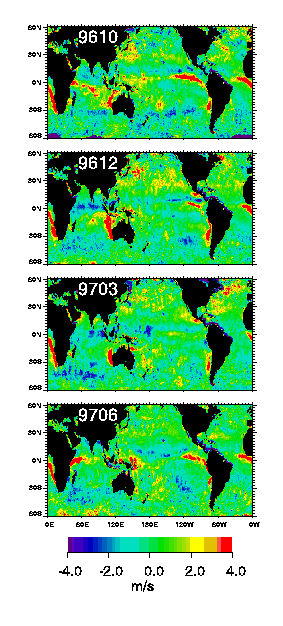NASA Scatterometert provides global ocean-surface wind fields with more structures than numerical
weather prediction
by Liu W.T., W.Tang and P.S. Polito.
Geophys. Res. Lett., Vol 25, No. 6, 761-764, 1998.

The above figure shows the
differences between monthly averaged zonal (east-west) components of
ocean surface wind derived from the spaceborne NASA Scatterometer
(NSCAT) and produced by the numerical weather prediction model of the
European Center for Medium Range Weather Forecasts (ECMWF), for October
1996, December 1996, March 1997 and June 1997, representing the four
seasons. The major differences are found in coastal and equatorial
regions, where the sharp changes in wind direction caused by land mass
and Coriolis force are smoothed over in ECMWF products; the wind
differences are explained to be the result of the superior spatial
resolution of NSCAT winds. The differences could have a significant
influence on the response of numerical ocean circulation models forced
by the two wind products, in these regions of ocean-upwelling and rich
nutrient.
 1
1
 2
2
 3
3
 4
4
 5
5
 1
1
 2
2
 3
3
 4
4
 5
5
